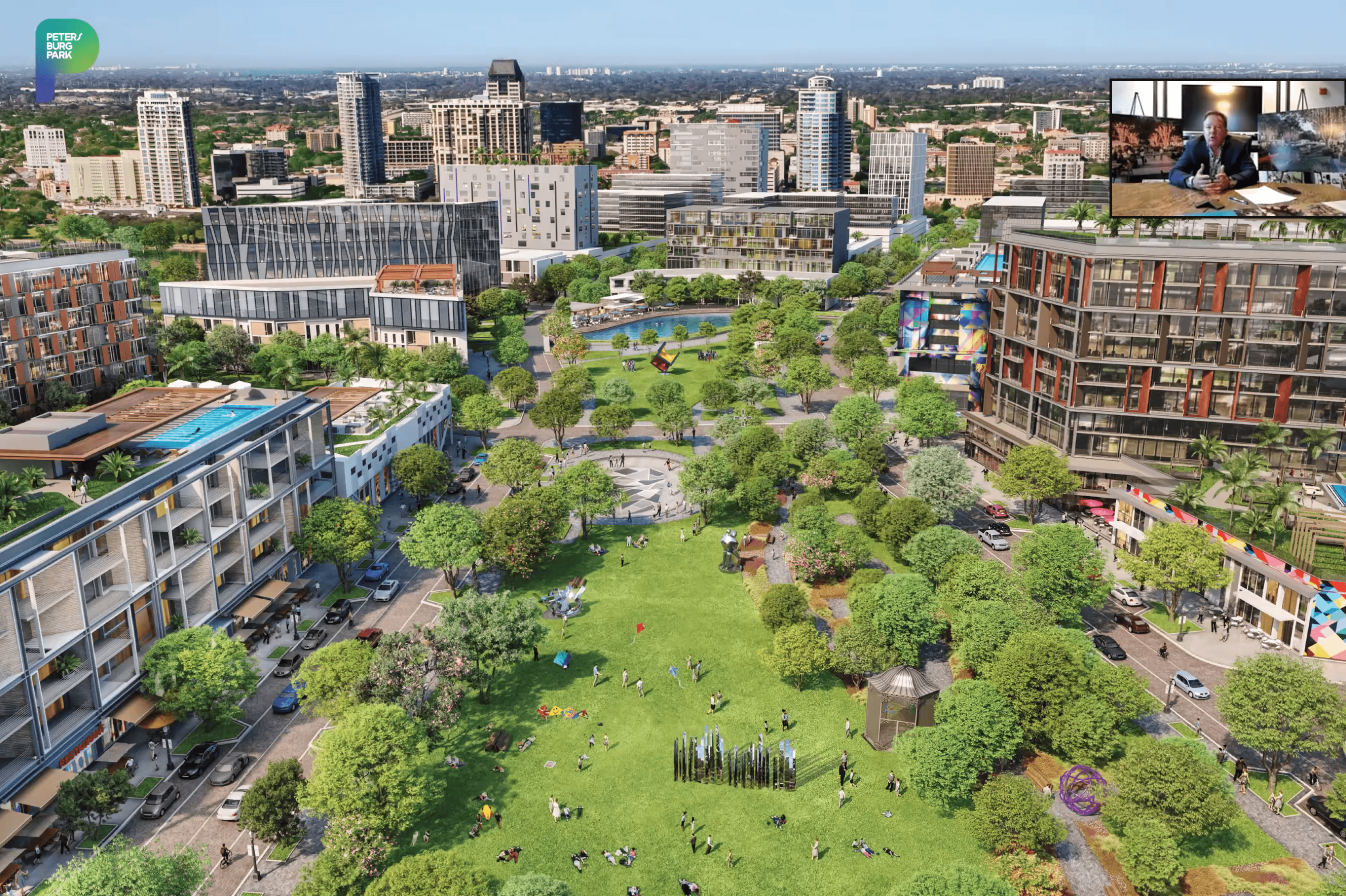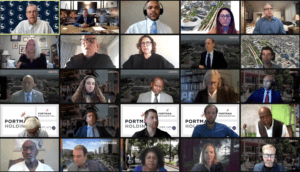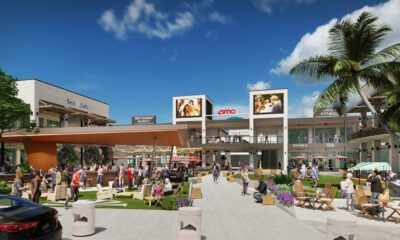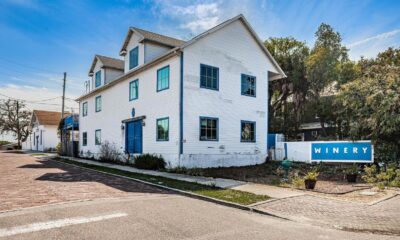Thrive
Potential Trop site developers face public scrutiny in virtual meeting

Representatives from JMA Ventures/Sugar Hill Community Partners, Midtown Development, Portman Holdings/Third Lake Partners and Unicorp National Developments brought their competing visions for the future of the Tropicana Field site directly to the people of St. Petersburg Monday night in a two-and-a-half hour virtual meeting.
Facilitated by Alan DeLisle, the city’s city development administrator, the forum kicked off with a short message from St. Pete Mayor Rick Kriseman, who set the tone by highlighting the 86-acre property’s troubled past and calling on developers to put the communal good above all else.
“This site has a long, deep history in this city,” Kriseman said. “Many promises were made — promises which remain unfulfilled, and it’s because of the history and unkept promises that the public, our residents, our business owners and any other interested stakeholders must be involved every step of the way until the last ribbon is cut on this site. We are committed to ensuring that the mistakes made in the past are not repeated. We must do right by those who came before us.”
Kriseman added that he is “tired of looking at a desert of concrete in the middle of our downtown” but emphasized that the site must be developed with a long-term vision and not just expediently for the sake of monetization. “This is a generational project,” he said. “Many mayors, many city council members will come and go before redevelopment is complete, but we must start somewhere.”

Alan DeLisle, top left, led a virtual public meeting Monday night that featured members of the four groups vying to redevelop the Tropicana Field site. Screen grab.
DeLisle then turned the meeting over to the developers for the next hour. Each group was given 15 minutes to present and explain their proposal. Attendees could submit questions at any time via Zoom’s Q&A function. The final hour of the meeting was set aside for answers to the questions, with each group allotted three minutes to respond.
A surprising number of the questions concerned Booker Creek — specifically the environmental feasibility and impacts of expanding and rerouting the waterway. All four proposals feature a significantly beefed-up Booker Creek as a centerpiece.
Eric Antalek, an architect and principal at HKS, which is part of the Portman Holdings/Third Lake Partners team, said Booker Creek is “the catalyst for redevelopment of the street grid and what you had there before Tropicana Field came along.” He said a “winding out” and “placemaking” process would make the waterway “a viable entity” and it would be “desirable to be there on a regular basis.”
The developers also responded to questions about their vision for the site vis-à-vis the Tampa Bay Rays, who have not committed to remaining in St. Petersburg after their Tropicana Field lease agreement expires in 2027, and have even proposed a controversial split-season plan that would see them play the first half of their season in the Tampa Bay region and then decamp for Montreal for the latter half. The baseball team’s future in the Sunshine City is so cloudy that the city required developers to submit two plans for the site — one with a ballpark and one without.
Chuck Whittall, the president and CEO of Orlando-based Unicorp, did not mince words when discussing the city’s stalemate with the Rays. “We would love to have a ball team there,” he said. “I do not think a split season works. It’s not functional to build a billion-dollar stadium up north somewhere and a billion-dollar stadium in Tampa. They’re going to have to pick a home, and I think St. Petersburg would be a great home for them to stay at.”
Whittall also called on the Rays’ ownership, not taxpayers, to front the money for a new stadium. “It should be financed through the billionaires who are involved in these businesses,” he said. “They’re the ones who ultimately benefit from it. It should not be a stress on the public. They’ve already felt that pain.”
While the various members of the four development teams were largely cordial toward each other, Whittall took a swipe at what he saw as unnecessary segmentations and divisions in some of the other plans.
“I’ve seen some of their proposals create a district for this and the district for that. What we’re trying to do is create a community where everybody is together,” he said. “Everybody participates together in the community. And I think we’ve achieved that. We’ve got office here. We’ve got hotels here. We’ve got housing here. We’ve got plenty of retail, just tons and tons of retail. It’s all mixed in a very pleasant way together.”
Unicorp’s plan, dubbed “Petersburg Park,” calls for 37 acres of park space and what Whittall admitted was a less-dense approach than what the city called for in its RFP. “What we tried to do,” he said, “is create a balance of what would the community want. And we think the community would want what we see right in the middle of this — a great place to gather.”
Whittall went on to critique his own group’s plan as being far from perfect. “I think it’s a great vision,” he said. “I think the perfect vision comes from community collaboration. We’ve all built lots of different developments there. The difference with us is we’re not internal rate of return driven. We’re driven by trying to create a great place.”
Affordable housing was another topic raised by many audience questions. David Carlock, the development manager for the JMA/Sugar Hill proposal, said that under his group’s plan, 35 percent of residential units would be affordable for people earning 80 percent or less than the St. Pete’s area median income (AMI). According to the U.S. Census Bureau, the city’s AMI for 2019, the latest year data was available, was $56,982. Eighty percent of that number is $45,585.60.
“We’re also committing to an artists’ loft program in our affordable housing,” Carlock said. “We’re very familiar with how vibrant the arts community is [in St. Pete] and we want to make sure that artists have a place that they can live, or perhaps even live and work.”
Carlock said a Trop site redeveloped by JMA/Sugar Hill would have apartments for rent in the $600-$800 range — a far cry from the skyrocketing rates seen elsewhere in downtown St. Pete. “We’re going to work on subsidies to do that,” he said. “We’re going to work on doing great design. We’re going to keep our profit lower so we can afford to get people into these residential units.”

An artist’s rendering of Midtown Developments’ “Creekside” proposal for the Tropicana Field site. Screen grab.
Last but not least, the development teams responded to questions about equity, which, as Kriseman mentioned in his opening remarks, is one of the foremost guiding principles of the project. Architect Randy Morton, part of the Midtown Development group, pointed to his experience as a member of the HKS team that was selected in 2016 to put together a master plan for the Trop site, both with and without a baseball stadium.
“I was the point person for all of that,” he said. “I held the mic at all the community meetings. I authored the stadium master plan. I then followed up and held the mic for all of the community meetings. So I have been in front of all of these people now for five years, and they’ll all recognize my face and what they’ll know and what they’ll remember is our process of creativity with an outreach process that parallels our design process, where we talk to people in the community, we take their ideas and show them how they become designs and forms in a master plan. We then go back to them and we show them what that all meant.”
Morton then yielded his time to Walter Hood, the creative director and founder of Hood Design Studio in Oakland, Calif., and a member of the Midtown Development group. Hood said a redeveloped Trop site has to do more than just pay lip service to the Gas Plant district, the predominantly Black neighborhood that was razed to make way for the stadium in the 1980s. He also posed some tough, thought-provoking questions about the nature and level of civic engagement that developers claim to perform.
“We have to get people invested in different ways,” he said. “If participation happens in a lot of different places, why do they all look the same? That means that people are listening but they’re somehow not incorporating those ideas.”
Hood said the Trop site, no matter which developer wins the project, should openly celebrate the area’s rich history, even if that means deviating from accepted aesthetic norms.
“I think this place should be different,” he said. “It should be idiosyncratic. It should have a different flavor. It should smell, taste and look different — embrace the past.”
He added, “That’s what we have to do, [but] that’s really difficult to do because you have to throw away your previous biases and you have to really allow those voices to come in and corrupt the way that we normally do the work. And our past is laden with a lot of promises and ways that we say people have engaged, and then the end results look different. And so what we’re interested in is engaging in a way so that what we manifest is sustainable and the people that start out here are still there in the future.”
The series of public meetings about the Trop site now shifts to in-person events scheduled for Wednesday and Thursday at The Coliseum, located at 535 4th Ave. N., in downtown St. Pete. They will run from 6 to 8:30 p.m. Capacity will be limited and attendees will be required to wear masks and register in advance for the specific meeting they would like to attend.
For the Wednesday meeting, click here to register. For Thursday’s meeting, click here.








John Schoeppner
April 7, 2021at8:12 am
To bad our illustrious Mayor didn’t follow his “Desert of Concrete” mantra when erecting his “Desert of Concrete” Pier! Visited his heat absorbing, lack of shade, concrete monstrosity once, but never again, as finding a respite from the Florida sun where melanoma runs rampart is next to impossible.
Signed, a 30 yr Florida Resident Senior Citizen